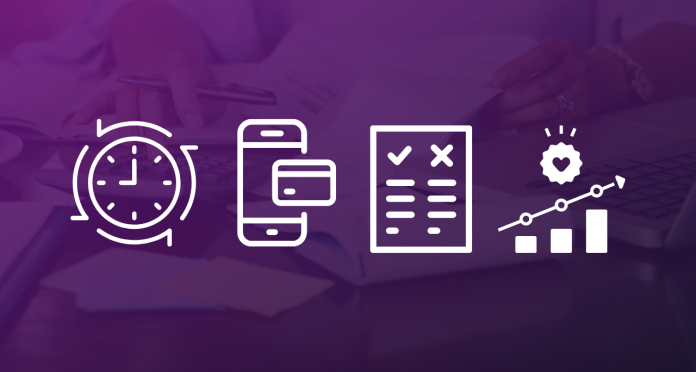Invoicing all transactions for any business or subscription is not a difficult process. For merchants, however, the catch is that you have to get the necessary permission from your customers. Let’s take magento 2 recurring payments as an example.
Once you sync your card information, the processor asks for recurring payments on the same transactions. If you’ve used apps like PayPal, Square or Stripe, you really know what I mean.
So, you know, in this guide we’re going to take an in-depth look at these payment systems and see how each handles recurring payments. To put it in context, you need a comprehensive solution for accepting recurring payments, specifically if you’re a merchant. Because it’s a sort of automated process, it’s easy for the processor to handle all your orders.
Suppose you want to bill your customers periodically, say monthly, the payment processor is designed to bill your customers according to their respective scheduled payment dates.
But before you get right into any popular processor at random, it’s wise to analyze what your terrible business needs are. At this point, every solution on the market has several expert tools to get your transactions in the right direction.
Table of Contents
Regular account-oriented payments
This mode is automated, just like the other major payment channels. With the invoice-based method, the system debits the customer’s debit or credit card after the authorization request is successfully processed. As simple as that sounds. It doesn’t sound like quantum physics, so to speak.
However, not all processors are robust enough to support this kind of transaction. Those that do provide a flawless solution, keeping your customers’ first account in format ion for future payments.
As long as the previous transactions mature successfully, all subsequent ones are seamless. What the handler does is automatically approve all new invoices. Typically, when an invoice is paid, the system updates its status as “paid” or “paid.” This is systematically reflected on all of your reports (both vendor and customer).
So, who should use regular invoice-based payments? Let’s take a look at.
Subscription Service Providers – By this I mean streaming services, as mentioned earlier, online magazines and SaaS services like Magento very personal WooCommerce.
Membership services – There are usually a number of regular payments from memberships, especially in business models such as gym and fitness centers, sports clubs and more.
Financial services – In this regard, you can constructively say that your savings and retirement plans, such as the familiar 401K plan, definitely fall into this category. Another typical case is payday loans, where this decision will help you avoid defaulting on your financial priorities.
What about recurring payments for online businesses?
Well, PowerSync emphasizes that you have to understand that recurring charges are quite important here. It goes without saying that there is also a fair share of online services at this point.
And here’s the practical scenario.
So if, say, you make an online purchase of software or, rather, sign up for a social club membership plan, this is where a regular online payment comes into play to make all your subsequent payments mandatory.
How recurring payments are useful
In fact, automatic payments are equally useful for businesses and customers. Let’s take a closer look at the benefits of recurring payments for both.
For customers, they are:
- An opportunity to get rid of headaches in terms of timely payment of services. Let’s say you sign up for a monthly subscription to some online publication. You pay by card – you enter your card details and get a receipt – everything is as usual. You set up a recurring payment service. That’s all? PowerSync assures you that you won’t have to re-enter all your details next month. Payments are automatically deducted – without reminders in the form of calls or messages;
- Such payments do not require your personal involvement, which means that you save your time;
- Many services offer discounts for activating the “autopay” service.
- Convenient? Of course, it is.
The list of services for which you can use automatic payments is very wide and varied. From the same subscription to various publications to pay utility bills. But about this a little later.
For representatives of business, recurring payments is an opportunity to influence financial indicators. How?
- By increasing revenues. With such payments, you can sell low-cost services to customers, which will nevertheless be carried out on an ongoing basis. Without recurring payments, those users would simply leave you. But they stay with you.
- With autopayments, you “lengthen” the customer cycle, thus making it endless.
- You retain customers. Again, such payments allow you to increase the cycle of interaction with your customer. In fact, automatically, you build up a longer cycle of the relationship.
- Note that previously such a service as recurring payments was quite complicated and available only for banks and mobile operators. But times are changing, and auto-payments have become an effective business tool available to most. Payment aggregators such as PowerSync allow both entrepreneurs and customers to take advantage of this service.
A little advice for entrepreneurs: if you do not want to face negativity from your clients who were not aware of regular payments for a certain service, tell them about it in details, tell them how often the money will be withdrawn, what advantages the client will get and how he/she can unsubscribe.
Believe, this will significantly increase the loyalty of your customers.
What are the mechanics of regular payments:
- The client selects a regular payment from the list of available payment methods on the merchant’s site.
- The client accepts the terms and conditions of regular payments at the stage of the invoice payment process. At this stage, the customer agrees to the amount, mechanics, payment schedule, and selects the auto debit expiration date.
- Client enters payment information and agrees to keep the card.
- The payment system contacts the acquiring bank, the international payment system (for example, VISA or MasterCard) and the issuing bank for the regular payment to take place – just as in the case of a standard card payment. After all parties approve the transaction, funds are credited to the merchant’s account, i.e., the seller.
- Each time a regular payment is made, the customer receives a check that informs them of the successful debit. Some business owners also notify customers of the next subscription debit.







